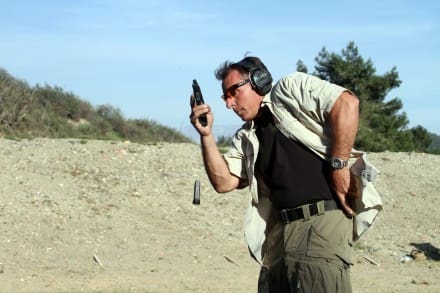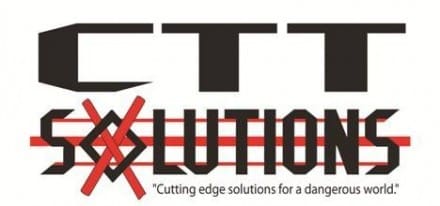The topic of safety is always at the front of every individual and institutions consciousness. The obvious concern is to ensure people are not injured or killed in the conduct of training but safety has taken a turn years ago away from common sense to rote compliance. Often times range protocol is confused with range safety. Range protocol is that which a range complex will or will not allow individuals or groups to do as well as specific control measures and procedures designed, in the eyes of those that created them, to minimize risk. This is counterproductive to learning and good training because it does not require individuals to think and often violates tactical principles. They are designed to replace individual thought and proficiency. The implied task in all training is safety and that translates directly to operational safety.
A few examples:
• “Point your weapon down range” when actually you mean “Point your weapon in a safe direction.”
o Down range is an administratively designated area where projectiles are intended to impact. Conditions and range status will identify it as a direction where a weapon may or may not be safely pointed and discharged.
o A Safe Direction by definition is a conscious decision to point and manipulate a weapon in a direction where a negligent, accidental or mechanical failure discharge cannot harm personnel or equipment.
o Down range is not always a safe direction so regardless of official status be aware. You are responsible for what your weapon does!
• Not allowing someone to pick up a magazine that has been ejected and bounced 6” over the established firing line.
o If it is so unsafe to reach over the firing line 6” (which I have witnessed repeatedly in institutional training both Mil and LE) then it’s probably not safe to even be standing next to the shooters on your left and right. Statistically more people are shot in parking lots at ranges than on the firing line.
• Requiring shooters to drop a magazine on the ground when unloading. The methodology behind this is “if you drop a magazine into your hand on the range you’ll do it in a gunfight.”
o If you can’t separate the difference between being in a gunfight and needing to reload your pistol/rifle versus clearing your system at the end of a firing sequence then you really shouldn’t have one in your hands if you may ever need it under pressure.
Protocol robs the individual of the authority to think and in doing so people will not think because their actions are dictated. There is no individual more dangerous to themselves or others than those in possession of a lethal implement who are not only not thinking but not allowed to think only follow instructions.
I have been in the presence of negligent discharges, some that have resulted in injury and one of three things that are always the first words out of the shooters mouth are either:
“I didn’t see…”
“I didn’t know…”
“I didn’t think…”
The last one is the only one that counts and the cause of the catastrophic failure. YOU DIDN”T THINK!!
Do not confuse protocol with safety! Protocol may or may not enhance safety but safety itself is a standalone concept. There is safe training, high risk safe training and unsafe training.
• Safe training is that which has been managed in a manner where injury is minimized by design and control measures. It is usually very basic in nature and highly structured.
• High Risk safe training is more complex training with an elevated amount of assumed risk but is deemed necessary for operational requirements. It has specific control measures in place to mitigate the chance of mishap or injury.
• Unsafe training is that which assumes an unnecessary amount of risk or more often than not is poorly designed and managed creating unnecessary and potentially catastrophic results. It lends itself to injury and catastrophic results and must never be undertaken.
There is no time when unsafe training is acceptable.
Safety:
• Treat all weapons as though they are loaded regardless of their perceived condition.
• Never point a weapon at anything you are not willing to kill or damage.
• Keep your weapon on safe and finger off the trigger until your sights are aligned and you have made the conscious decision to fire.
• Know your target, foreground, background, left and right. Be aware of the ballistic capability of your weapon, the intended target and the backstop.
Down range is an administratively designated area where projectiles are intended to impact. Conditions and range status will identify it as a direction where a weapon may or may not be safely pointed and discharged. A Safe Direction by definition is a conscious decision to point and manipulate a weapon in a direction where a negligent, accidental or mechanical failure discharge cannot harm personnel or equipment.
Down range is not always a safe direction
If you have any doubt as to your actions STOP, THINK and then act accordingly because you can’t recall the bullet once it’s gone. Be safe and not a robot. In practice robotic actions are devoid of thought and that is ultimately dangerous. Protocol be damned, think first!
- Mike Pannone
Mike Pannone retired from the Army’s premier assault force (1st SFOD-D) after an explosive breaching injury. A year after his retirement America was attacked on 9/11 and he returned to help serve his country as the head marksmanship instructor at the Federal Air Marshals training course and then moved to help stand up the FAMS Seattle field office. In 2003 he left the FAMS to serve as a PSD detail member and then a detail leader for the State Department during 2003 and 2004 in Baghdad and Tikrit.
In 2005 he served as a ground combat advisor of the Joint Counter IED Task Force and participated on combat operations with various units in Al Anbar province. Upon returning he gave IED awareness briefings to departing units and helped stand up a pre-Iraq surge rifle course with the Asymmetric Warfare Group as a lead instructor. With that experience as well as a career of special operations service in Marine Reconnaissance, Army Special Forces and JSOC to draw from he moved to the private sector teaching planning, leadership, marksmanship and tactics as well as authoring and co-authoring several books such as The M4 Handbook, AK Handbook and Tactical Pistol shooting. Mike also consults for several major rifle and accessory manufacturers to help them field the best possible equipment to the warfighter, law enforcement officer and upstanding civilian end user. He is considered a subject matter expert on the AR based Stoner platform in all its derivatives.
Gunfighter Moment is a weekly feature brought to you by Alias Training & Security Services. Each week Alias brings us a different Trainer and in turn they offer some words of wisdom.

